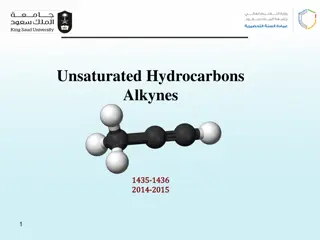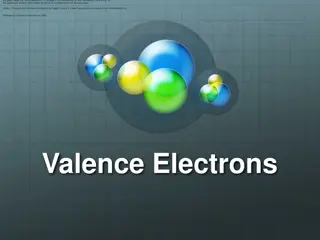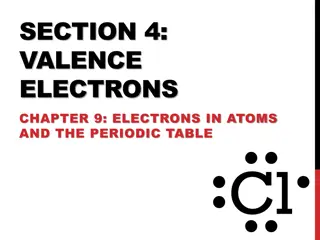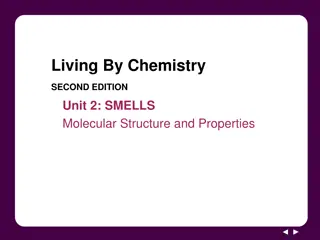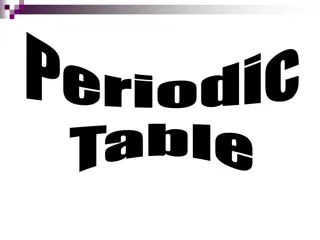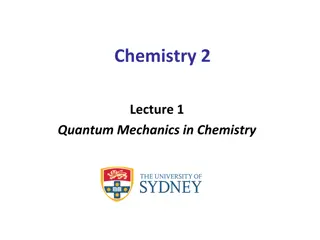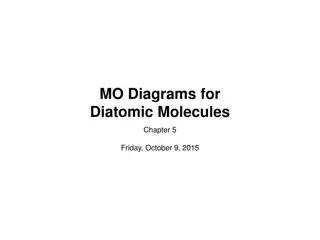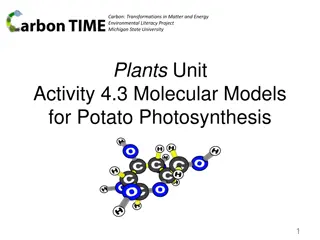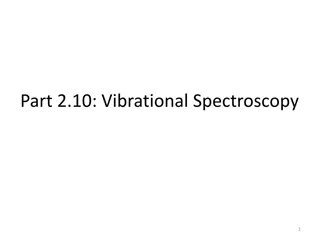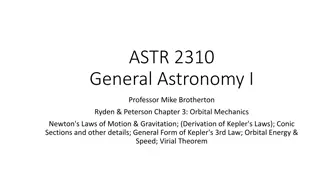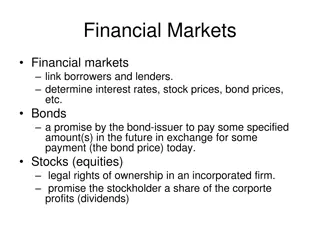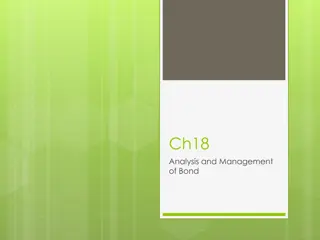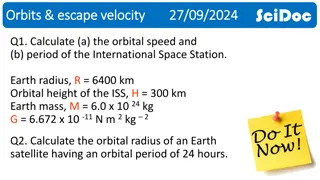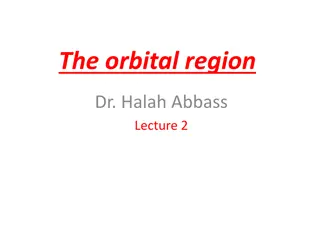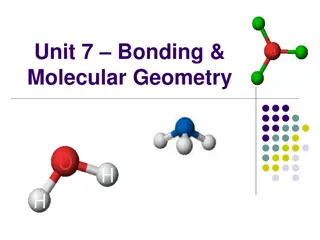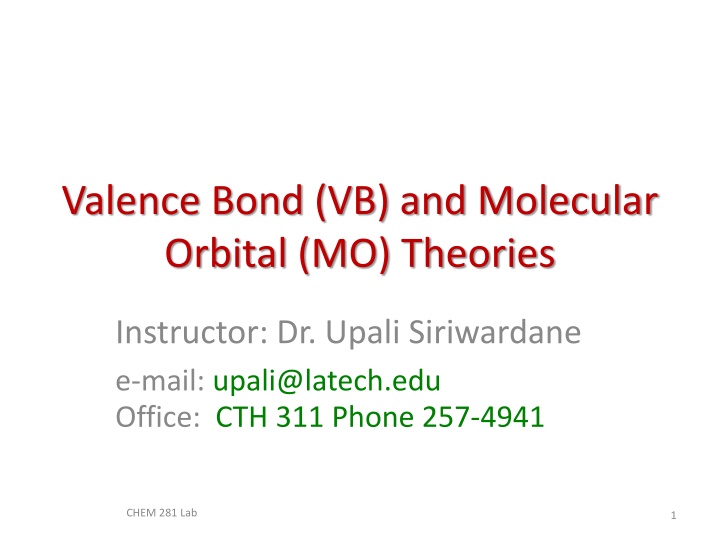
Molecular Structure and Bonding Theories
Explore Valence Bond (VB) and Molecular Orbital (MO) theories in chemistry with Dr. Upali Siriwardane. Learn about VSEPR Theory, molecular geometry, and polar molecules to understand the arrangement of atoms and electron pairs in different molecules.
Download Presentation

Please find below an Image/Link to download the presentation.
The content on the website is provided AS IS for your information and personal use only. It may not be sold, licensed, or shared on other websites without obtaining consent from the author. If you encounter any issues during the download, it is possible that the publisher has removed the file from their server.
You are allowed to download the files provided on this website for personal or commercial use, subject to the condition that they are used lawfully. All files are the property of their respective owners.
The content on the website is provided AS IS for your information and personal use only. It may not be sold, licensed, or shared on other websites without obtaining consent from the author.
E N D
Presentation Transcript
Valence Bond (VB) and Molecular Orbital (MO) Theories Instructor: Dr. Upali Siriwardane e-mail: upali@latech.edu Office: CTH 311 Phone 257-4941 CHEM 281 Lab 1
Molecular structure and bonding Lewis structures 2.1 The octet rule 2.2 Structure and bond properties 2.3 The VSEPR model Valence-bond theory 2.4 The hydrogen molecule 2.5 Homonuclear diatomic molecules 2.6 Polyatomic molecules Molecular orbital theory 2.7 An introduction to the theory 2.8 Homonuclear diatomic molecules 2.9 Heteronuclear diatomic 2.10 Bond properties
What is VSEPR Theory Valence Shell Electron Pair Repulsion This theory assumes that the molecular structure is determined by the lone pair and bond pair electron repulsion around the central atom based on the Lewis Structure.
What Geometry is Possible around Central Atom? What is Electronic or Basic Structure? Arrangement of electron pairs around the central atom is called the electronic or basic structure What is Molecular Structure? Arrangement of atoms around the central atom is called the molecular structure
Possible Molecular Geometry 1. Linear (180) 2. Trigonal Planar (120) 3. T-shape (90, 180) 4. Tetrahedral (109) 5. Square palnar ( 90, 180) 6. Sea-saw (90, 120, 180) 7. Trigonal bipyramid (90, 120, 180) 8. Octahedral (90, 180)
Molecular Structure from VSEPR Theory H2O Bent or angular NH3 Pyramidal CO2 Linear
Molecular Structure from VSEPR Theory SF6 Octahedral PCl5 Trigonal bipyramidal XeF4 Square planar
What is a Polar Molecule? Molecules with unbalanced electrical charges Molecules with a dipole moment Molecules without a dipole moment are called non-polar molecules
How do you a Pick Polar Molecule? Get the molecular structure from VSEPR theory From (electronegativity) difference of bonds see whether they are polar-covalent. If the molecule have polar-covalent bond, check whether they cancel from a symmetric arrangement. If not molecule is polar
Which Molecules are Polar H2O Bent or angular, polar-covalent bonds, asymmetric molecule-polar NH3 Pyramidal, polar-covalent bonds, asymmetric molecule-polar CO2 Linear, polar-covalent bonds, symmetric molecule-polar
What is hybridization? Mixing of atomic orbitals on the central atoms valence shell (highest n orbitals) Bonding: s p d Px dx2- y2 Py dz2 Pz sp, sp2, sp3, sp3d, sp3d2
What is hybridization? Mixing of atomic orbitals on the central atom Bonding a hybrid orbital could over lap with another ( )atomic orbital or ( ) hybrid orbital of another atom to make a covalent bond. possible hybridizations: sp, sp2, sp3, sp3d, sp3d2
What is Valence Bond Theory Describes bonding in molecule using atomic orbital orbital of one atom occupy the same region with a orbital from another atom total number of electrons in both orbital is equal to two Be Cl2
What is hybridization? Mixing of atomic orbitals on the central atom Bonding a hybrid orbital could over lap with another ( )atomic orbital or ( ) hybrid orbital of another atom to make a covalent bond. possible hybridizations: sp, sp2, sp3, sp3d, sp3d2
How do you tell the hybridization of a central atom? Get the Lewis structure of the molecule Look at the number of electron pairs on the central atom. Note: double, triple bonds are counted as single electron pairs. Follow the following chart
Kinds of hybrid orbitals Hybrid sp sp2 sp3 sp3d sp3d2 geometry linear trigonal planar # of orbital 2 3 tetrahedral trigonal bipyramid octahedral 4 5 6
What is hybridization? Mixing of atomic orbitals on the central atoms valence shell (highest n orbitals) Bonding: s p d Px dx2- y2 Py dz2 Pz sp, sp2, sp3, sp3d, sp3d2
Possible hybridizations of s and p sp-hybridization: 1= 1/ 2 s- 1/ 2 p 2 = 1/ 2 s+ 1/ 2 p sp2-hybridization: 1 = 1/ 3 s + 1/ 6 px + 1/ 2 py 2 = 1/ 3 s + 1/ 6 px - 1/ 2 py 3 = 1/ 3 s - 2/ 6 px sp3-hybridization: 1 = 1/ 4 s + 1/ 4 px + 1/ 4 py + 1/ 4 pz 2 = 1/ 4 s - 1/ 4 px - 1/ 4 py + 1/ 4 pz 3 = 1/ 4 s + 1/ 4 px - 1/ 4 py - 1/ 4 pz 4 = 1/ 4 s - 1/ 4 px + 1/ 4 py -1/ 4 pz
Possible hybridizations of s and p sp-hybridization:
What are and bonds bonds single bond resulting from head to head overlap of atomic orbital bond double and triple bond resulting from lateral or side way overlap of p atomic orbitals bond double and triple bond resulting from lateral or side way overlap of d atomic orbitals
What are and bonds bonds bond
What are bonds bond double and triple bond resulting from lateral or side way overlap of d atomic orbitals
Basic Rules of Molecular Orbital Theory The MO Theory has five basic rules: The number of molecular orbitals = the number of atomic orbitals combined Of the two MO's, one is a bonding orbital (lower energy) and one is an anti-bonding orbital (higher energy) Electrons enter the lowest orbital available The maximum # of electrons in an orbital is 2 (Pauli Exclusion Principle) Electrons spread out before pairing up (Hund's Rule)
Molecular Orbital Theory Molecular orbitals are obtained by combining the atomic orbitals on the atoms in the molecule.
Homo Nuclear Diatomic Molecules Period 1 Diatomic Molecules: H2 and He2
Bond Order Calculating Bond Order
Molecualr Orbital diagram for B2, C2 and N2
Molecualr Orbital diagram for O2, F2 and Ne2
7. Using molecular orbital theory and diagrams, explain why, O2 is a paramagnetic whereas N2 is diamagnetic.
Electronic Configuration of molecules When writing the electron configuration of an atom, we usually list the orbitals in the order in which they fill. Pb: [Xe] 6s2 4f14 5d10 6p2 We can write the electron configuration of a molecule by doing the same thing. Concentrating only on the valence orbitals, we write the electron configuration of O2 as follows. O2:(2 ) 2(2 *) 2 (2 ) 4 (2 *) 2

